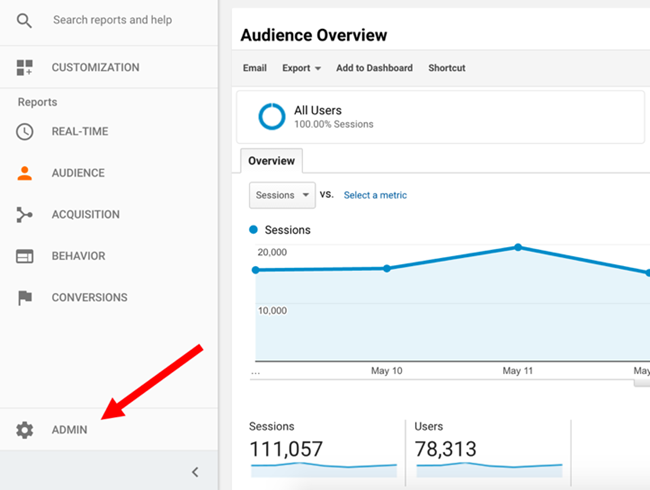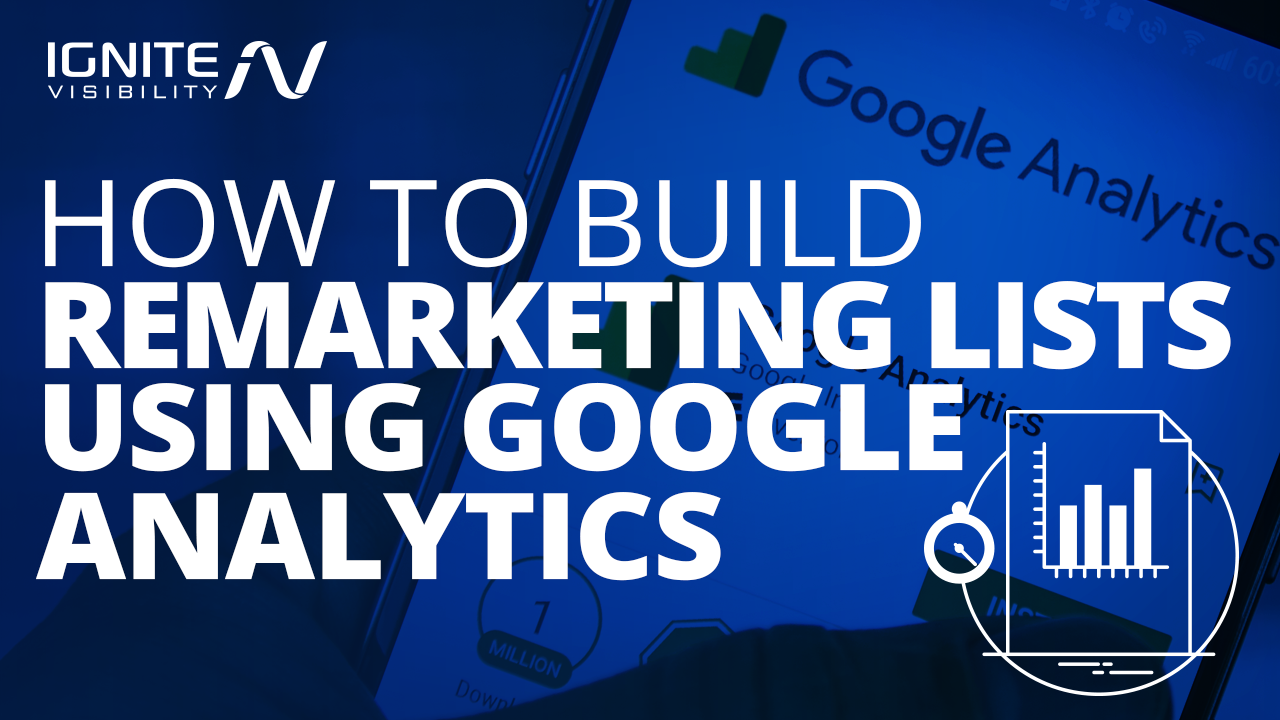How to Utilize Remarketing In Google Analytics for Your Organization
How to Utilize Remarketing In Google Analytics for Your Organization
Blog Article
Effective Strategies for Remarketing in Google Analytics
In the realm of digital marketing, the realm of remarketing in Google Analytics stands as a crucial tool for services aiming to boost their on-line visibility and conversion prices. With strategic target market segmentation, tailored remarketing listings, and engaging advertisement creatives, businesses can craft personalized campaigns that reverberate with their target market. Nevertheless, the true success lies in the capability to continually fine-tune and enhance these strategies based on performance metrics and information understandings. By discovering the subtleties of dynamic remarketing and leveraging advanced tracking tools, companies can unlock the complete capacity of their remarketing efforts, resulting in increased brand name exposure and client involvement.
Audience Division
Utilizing target market segmentation is an essential approach in optimizing the performance of remarketing projects within Google Analytics. By dividing your target market into unique groups based upon their habits, demographics, or rate of interests, you can customize your advertising messages to be much more relevant and interesting. This approach enables you to provide tailored ads to particular segments, boosting the probability of conversion.

Furthermore, audience segmentation assists you comprehend the varying requirements and preferences of different client teams, enabling you to craft even more compelling advertisement creatives and deals. This targeted method not only improves the performance of your remarketing initiatives but also improves total campaign performance.
Establishing Up Remarketing Lists
To successfully carry out remarketing strategies in Google Analytics, the initial action includes creating targeted remarketing lists based on particular audience interactions. Setting up remarketing lists enables marketers to segment their site visitors into different categories based on their habits, such as pages viewed, products looked for, or actions handled the site. By defining these sectors, marketing professionals can then create pertinent and customized ads that target these particular teams, boosting the possibility of conversion.
Remarketing checklists can be established making use of different criteria such as page visits, period of check out, certain objective conclusions, or perhaps specific events triggered on the web site. This level of modification allows marketing professionals to tailor their advertisements to match the interests and preferences of each fractional audience, resulting in higher interaction and conversion rates.
Furthermore, remarketing lists can additionally be created based upon data imported from other resources like CRM systems, enabling much more exact targeting. By setting up these targeted remarketing lists, online marketers can effectively reach out to possible clients who have actually already shown passion in their services or products, maximizing the impact of their remarketing campaigns.
Developing Compelling Advertisement Creatives
After segmenting website site visitors into targeted remarketing checklists based upon particular audience communications, the following vital step is to craft engaging ad creatives that reverberate with each fractional team's preferences and rate of interests. The effectiveness of remarketing projects heavily relies upon the ability of these advertisement creatives to capture the interest of the target market and drive them to take the desired action.
To produce engaging ad creatives, it is vital to comprehend the unique features of each fractional team (What Is “Remarketing” In Google Analytics?). Customizing the messaging, visuals, and supplies to align with the interests and choices of the target market can dramatically boost the opportunities of click now conversion. Utilizing dynamic advertisements that instantly adjust web content based upon the individual's behavior can additionally enhance the personalization of the advertisement experience

Surveillance Performance and Optimization
Reliable tracking of campaign performance and continual optimization are crucial elements of successful remarketing techniques in Google Analytics. To make certain the efficiency of remarketing projects, online marketers must regularly track vital efficiency metrics such as click-through rates, conversion prices, and return on advertisement invest. By checking these metrics, marketing experts can get beneficial understandings into the efficiency of their projects and determine areas for enhancement.
In Google Analytics, marketing experts can utilize tools like conversion tracking and audience segmentation to examine the efficiency of their remarketing campaigns. Conversion monitoring enables marketers to track certain actions that users take after clicking on a remarketing advertisement, providing valuable information on the effectiveness of the campaign in driving wanted end results. Target market segmentation, on the other hand, enables marketing professionals to divide their audience right into different sections based on numerous standards such as demographics, behavior, and passions, permitting even more targeted and customized remarketing efforts.
Continuous optimization is crucial for optimizing the impact of remarketing campaigns. Online marketers need to utilize A/B screening to trying out various advertisement creatives, messaging, and targeting methods to identify the most effective approaches. By consistently evaluating campaign performance data and making data-driven optimizations, marketers can make sure that their remarketing campaigns are achieving the desired results and driving conversions efficiently.
Leveraging Dynamic Remarketing
Making use of dynamic remarketing can dramatically enhance the significance and effect of targeted internet ads in Google Analytics. This sophisticated strategy enables advertisers to show customized ads to users that have previously seen their site or utilized their mobile application. By dynamically presenting service or products that the individuals have actually revealed rate of interest in, vibrant remarketing helps to keep the brand fresh in their minds and encourages them to return to finish an acquisition.

Moreover, vibrant remarketing campaigns can be automated and optimized in real-time based on efficiency data, making certain that the ads stay pertinent and effective. By leveraging vibrant remarketing in Google Analytics, advertisers can produce more impactful and targeted marketing campaign that reverberate with their audience and drive outcomes.
Final Thought
In conclusion, efficient remarketing strategies in Google Analytics entail target market segmentation, targeted remarketing lists, engaging ad creatives, efficiency tracking, and dynamic remarketing. By concentrating on customized ads, information analysis, and continual optimization, companies can enhance conversion rates and drive interaction effectively. Leveraging tools like conversion monitoring guarantees that advertisements continue to be appropriate and personalized, resulting in general success in remarketing initiatives.
Via tactical audience segmentation, customized remarketing listings, and engaging ad creatives, companies can craft customized projects that reverberate with their target audience. Utilizing dynamic ads that instantly adjust content based on the customer's habits can also improve the personalization of the ad experience.
Conversion monitoring allows online marketers to track specific actions that customers take after clicking on a remarketing ad, offering valuable information on the effectiveness of the project in driving desired outcomes.Using vibrant remarketing can dramatically improve the significance and effect of targeted advertisements in Google Analytics - What Is “Remarketing” In Google Analytics?.In conclusion, reliable remarketing techniques in Google Analytics entail audience segmentation, targeted remarketing lists, compelling ad creatives, performance tracking, and dynamic remarketing
Report this page